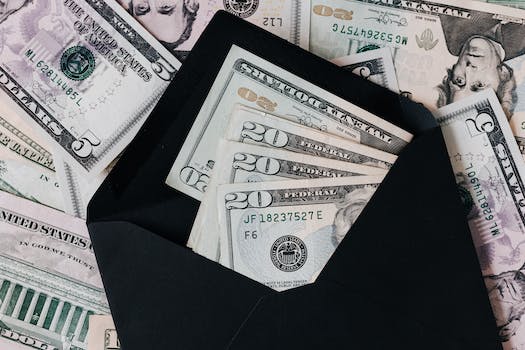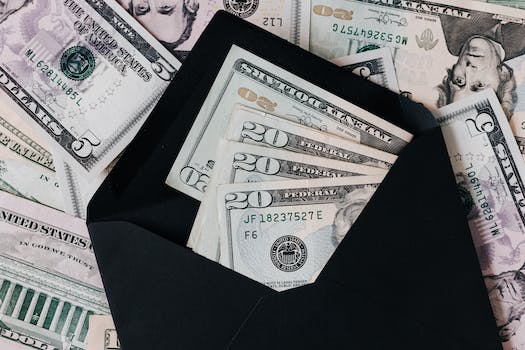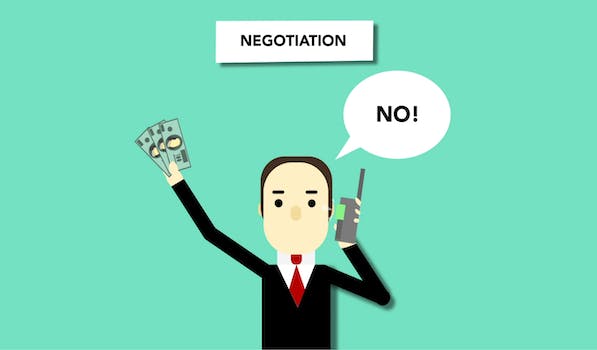How To Create A Personal Budget And Save Money
“Take control of your finances and achieve your financial goals with these simple steps to creating a personal budget.”
Introduction
Creating a personal budget is an essential step towards financial stability and achieving your financial goals. It helps you track your income and expenses, identify areas where you can cut back on spending, and save money for emergencies or future expenses. In this article, we will discuss how to create a personal budget and save money.
5 Simple Steps to Creating a Personal Budget
Creating a personal budget can seem daunting, but it’s an essential step towards financial stability. By taking control of your finances, you can save money, pay off debt, and achieve your financial goals. Here are five simple steps to creating a personal budget and saving money.
Step 1: Determine Your Income
The first step in creating a personal budget is to determine your income. This includes your salary, any bonuses or commissions, and any other sources of income. If you have a variable income, such as freelance work or a commission-based job, it’s important to estimate your average monthly income.
Step 2: Track Your Expenses
The next step is to track your expenses. This includes everything from rent or mortgage payments to groceries, utilities, and entertainment. It’s important to be thorough and include all of your expenses, no matter how small. You can use a spreadsheet or a budgeting app to track your expenses.
Step 3: Categorize Your Expenses
Once you’ve tracked your expenses, it’s time to categorize them. This will help you see where your money is going and identify areas where you can cut back. Common categories include housing, transportation, food, entertainment, and debt payments.
Step 4: Set Goals
Now that you know your income and expenses, it’s time to set some goals. This could include paying off debt, saving for a down payment on a house, or building an emergency fund. It’s important to set realistic goals that are achievable within your budget.
Step 5: Create Your Budget
The final step is to create your budget. Start by subtracting your expenses from your income. If you have money left over, allocate it towards your goals. If you don’t have enough money to cover your expenses, you’ll need to find ways to cut back. This could include reducing your entertainment budget, finding ways to save on groceries, or cutting back on transportation costs.
Tips for Sticking to Your Budget
Creating a budget is just the first step. To achieve your financial goals, you’ll need to stick to your budget. Here are some tips to help you stay on track:
1. Use cash for discretionary spending. This will help you avoid overspending on credit cards.
2. Find ways to save on everyday expenses. This could include using coupons, buying generic brands, or shopping at discount stores.
3. Avoid impulse purchases. Before making a purchase, ask yourself if it’s something you really need.
4. Review your budget regularly. This will help you identify areas where you can cut back and make adjustments as needed.
5. Celebrate your successes. When you reach a financial goal, take time to celebrate your achievement. This will help motivate you to continue working towards your goals.
In conclusion, creating a personal budget is an essential step towards financial stability. By following these five simple steps, you can take control of your finances, save money, and achieve your financial goals. Remember to track your expenses, categorize them, set goals, and create your budget. With a little discipline and determination, you can achieve financial freedom and live the life you’ve always wanted.
The Importance of Tracking Your Expenses for Successful Budgeting

Creating a personal budget is an essential step towards financial stability. It helps you keep track of your expenses, prioritize your spending, and save money for future goals. However, creating a budget is not just about setting limits on your spending. It also involves tracking your expenses to understand where your money is going and identify areas where you can cut back.
Tracking your expenses is the foundation of successful budgeting. It allows you to see how much you are spending on different categories such as housing, transportation, food, entertainment, and other expenses. By tracking your expenses, you can identify areas where you are overspending and make adjustments to your budget accordingly.
There are several ways to track your expenses. One of the easiest ways is to use a budgeting app or software. These tools allow you to link your bank accounts and credit cards, so your transactions are automatically categorized and tracked. You can also manually enter cash transactions and other expenses to get a complete picture of your spending.
Another way to track your expenses is to use a spreadsheet or a notebook. This method requires more effort, but it allows you to customize your tracking system and see your expenses in detail. You can create categories for your expenses, such as rent, utilities, groceries, and entertainment, and record your transactions daily or weekly.
Regardless of the method you choose, the key is to be consistent and accurate in tracking your expenses. Make sure to record all your transactions, including small purchases like coffee or snacks. These small expenses can add up over time and affect your overall budget.
Once you have tracked your expenses for a month or two, it’s time to analyze your spending patterns. Look at your expenses by category and see where you are spending the most money. Are you spending too much on dining out or entertainment? Are your utility bills higher than expected? These insights will help you identify areas where you can cut back and save money.
Cutting back on expenses doesn’t mean you have to sacrifice your quality of life. It means being mindful of your spending and finding ways to save money without compromising your needs and wants. For example, you can reduce your dining out expenses by cooking at home more often or finding cheaper restaurants. You can save on utilities by turning off lights and appliances when not in use or using energy-efficient bulbs and appliances.
In addition to cutting back on expenses, you can also increase your income to boost your savings. This can be done by taking on a side hustle, asking for a raise at work, or selling items you no longer need. Every extra dollar you earn can be put towards your savings goals, whether it’s building an emergency fund, paying off debt, or saving for a vacation or a down payment on a house.
In conclusion, tracking your expenses is a crucial step towards creating a personal budget and saving money. It allows you to understand your spending patterns, identify areas where you can cut back, and make adjustments to your budget accordingly. By being mindful of your spending and finding ways to save money, you can achieve your financial goals and live a more fulfilling life.
How to Cut Costs and Save Money on Everyday Expenses
Creating a personal budget is an essential step towards financial stability. It helps you track your expenses, identify areas where you can cut costs, and save money for future goals. However, sticking to a budget can be challenging, especially when you have to make tough choices about your spending habits. In this article, we will discuss some practical tips on how to cut costs and save money on everyday expenses.
The first step towards cutting costs is to identify your expenses. Make a list of all your monthly bills, including rent/mortgage, utilities, groceries, transportation, and entertainment. Once you have a clear picture of your expenses, you can start looking for ways to reduce them.
One of the easiest ways to save money on everyday expenses is to cut back on eating out. Eating at restaurants can be expensive, and the cost can add up quickly. Instead, try cooking at home more often. Not only is it cheaper, but it’s also healthier. You can also save money by buying groceries in bulk and planning your meals in advance.
Another way to save money is to reduce your energy consumption. Turn off lights and appliances when you’re not using them, and unplug electronics when they’re not in use. You can also save money on your energy bill by using energy-efficient light bulbs and appliances.
If you’re a frequent traveler, you can save money on transportation costs by using public transportation or carpooling. Not only is it cheaper, but it’s also better for the environment. You can also save money on gas by driving a fuel-efficient car or by using a gas rewards credit card.
When it comes to entertainment, there are plenty of ways to have fun without breaking the bank. Instead of going to the movies, try renting a movie or streaming one online. You can also save money on concerts and sporting events by buying tickets in advance or looking for deals online.
Another way to save money is to cut back on your subscription services. Do you really need that gym membership or that monthly subscription to a streaming service? Consider canceling any subscriptions that you don’t use regularly.
Finally, it’s important to set financial goals and stick to them. Whether you’re saving for a down payment on a house or a vacation, having a clear goal in mind can help you stay motivated. Make sure to track your progress regularly and adjust your budget as needed.
In conclusion, creating a personal budget and cutting costs can be challenging, but it’s essential for financial stability. By identifying your expenses and looking for ways to reduce them, you can save money and achieve your financial goals. Remember to set realistic goals and track your progress regularly. With a little effort and discipline, you can create a budget that works for you and your lifestyle.
The Benefits of Automating Your Savings for Long-Term Financial Goals
Creating a personal budget and saving money can be a daunting task, but it is essential for achieving long-term financial goals. One of the best ways to make saving money easier is by automating your savings. This means setting up automatic transfers from your checking account to your savings account or investment account. In this article, we will discuss the benefits of automating your savings and how to get started.
The first benefit of automating your savings is that it makes saving money effortless. When you set up automatic transfers, you don’t have to remember to transfer money every month. The money is automatically transferred from your checking account to your savings account or investment account on a regular basis. This makes it easier to stick to your budget and save money consistently.
Another benefit of automating your savings is that it helps you stay on track with your long-term financial goals. When you set up automatic transfers, you can specify how much money you want to save each month. This helps you stay focused on your savings goals and ensures that you are making progress towards them.
Automating your savings also helps you avoid the temptation to spend money that you should be saving. When you have to manually transfer money from your checking account to your savings account, it can be tempting to skip a transfer or use the money for something else. However, when you automate your savings, the money is transferred before you have a chance to spend it.
Getting started with automating your savings is easy. The first step is to determine how much money you want to save each month. This will depend on your income, expenses, and financial goals. Once you have a target savings amount, you can set up automatic transfers from your checking account to your savings account or investment account.
Most banks and financial institutions offer automatic transfer options. You can usually set up the transfers online or by contacting customer service. You will need to provide the account numbers for your checking and savings accounts, as well as the amount and frequency of the transfers.
It is important to review your budget and savings goals regularly to ensure that you are on track. If you need to adjust your savings amount or frequency, you can do so at any time. You can also set up multiple automatic transfers for different savings goals, such as a down payment on a house or a vacation fund.
In conclusion, automating your savings is a great way to make saving money easier and more effective. It helps you stay on track with your long-term financial goals and avoid the temptation to spend money that you should be saving. Getting started is easy, and most banks and financial institutions offer automatic transfer options. By automating your savings, you can take control of your finances and achieve your financial goals.
Tips for Sticking to Your Budget and Avoiding Impulse Purchases
Creating a personal budget is a great way to take control of your finances and save money. However, sticking to your budget can be challenging, especially when faced with tempting impulse purchases. In this article, we will provide you with some tips on how to stick to your budget and avoid impulse purchases.
The first step in sticking to your budget is to set realistic goals. You need to determine how much money you can realistically save each month and set a budget accordingly. This will help you avoid overspending and ensure that you have enough money to cover your expenses.
Once you have set your budget, it is important to track your spending. This will help you identify areas where you are overspending and make adjustments accordingly. You can use a spreadsheet or a budgeting app to track your spending and keep yourself accountable.
Another tip for sticking to your budget is to avoid impulse purchases. Impulse purchases are those that you make on a whim, without thinking about whether or not you really need the item. To avoid impulse purchases, it is important to plan your purchases in advance. Make a list of the things you need to buy and stick to it. If you see something that you want but it is not on your list, wait a few days before making the purchase. This will give you time to think about whether or not you really need the item.
It is also important to avoid shopping when you are feeling emotional. When we are feeling stressed, anxious, or bored, we are more likely to make impulse purchases. Instead of shopping, try to find other ways to cope with your emotions, such as going for a walk, meditating, or talking to a friend.
Another tip for sticking to your budget is to avoid using credit cards. Credit cards can be tempting because they allow us to make purchases without having to pay for them right away. However, this can lead to overspending and debt. Instead of using credit cards, try to use cash or a debit card. This will help you stay within your budget and avoid accumulating debt.
Finally, it is important to reward yourself for sticking to your budget. Saving money can be challenging, so it is important to celebrate your successes. Set small goals for yourself and reward yourself when you achieve them. For example, if you stick to your budget for a month, treat yourself to a small purchase or a night out with friends.
In conclusion, creating a personal budget and sticking to it can be challenging, but it is also a great way to take control of your finances and save money. By setting realistic goals, tracking your spending, avoiding impulse purchases, and rewarding yourself for your successes, you can stay within your budget and achieve your financial goals. Remember, it takes time and effort to create new habits, so be patient with yourself and keep working towards your goals.
Conclusion
Creating a personal budget is an essential step towards financial stability and saving money. By tracking your income and expenses, you can identify areas where you can cut back and save more. It is important to set realistic goals and stick to your budget to achieve your financial objectives. Additionally, regularly reviewing and adjusting your budget can help you stay on track and make necessary changes. With discipline and commitment, anyone can create a personal budget and save money for their future.




